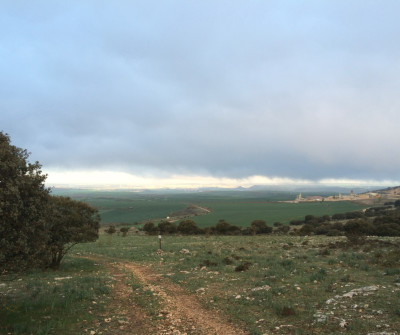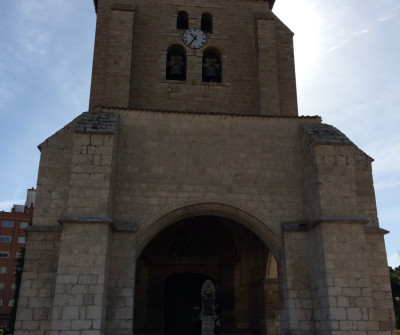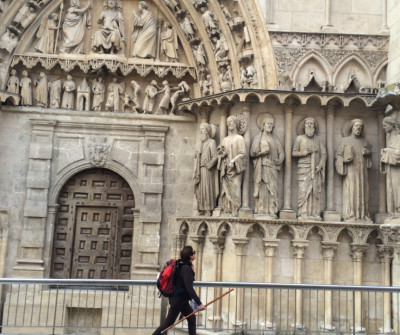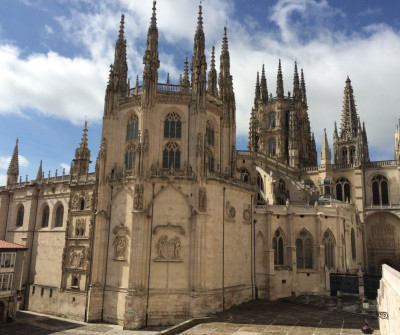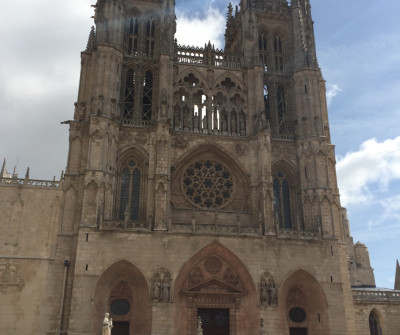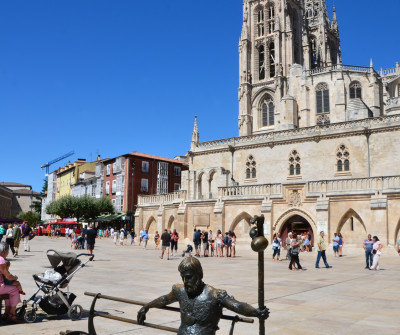It leaves behind San Juan de Ortega and its emblematic monastery, which was declared in 1931: Asset of Cultural Interest, to continue the Camino on an almost straight route that crosses, before reaching Agés, a pine forest that will give a rest to pilgrims to stand the heat.
Agés is left behind following a path to Atapuerca, home to one of the most important prehistoric sites in Europe, designated aWorld Heritage. After crossing the village, you will continue onto a paved road descending towards the Pico River.
Seven kilometres from the day’s starting point, you will find Villalval. Both here and in the following villages of Cardeñuelas Río Pico and Orbaneja Río Pico there are places to eat.
If you follow the signs to Castañares, you will reach this town after 15 kilometres with two options to get to Burgos: taking the traditional route over Villafría that runs close to the main road, or following the course of the river Arlanzón along its riverbanks.
In Burgos there are many options for culture and leisure. The impressive cathedral especially stands out. One of the most beautiful monuments of Gothic art in all Europe and a World Heritage Site since 1984, the Cathedral also houses the tomb of El Cid Campeador and his wife, Doña Jimena. Although general admission is €7 to access the Cathedral, pilgrims showing their Credential or pilgrim passport only pay €3.50, which includes an audio guide. The Cathedral closes at 6:00PM from November to March and at6:30 from March to October. Calle Sombrería is a street leaving out of the Plaza Mayor. It is one of the most famous traditional streets in the city, as it is full of places to enjoy eating tapas an a lively atmosphere. Other worthwhile sites to visit include the Arco de Santa María (one of the main access gates to the city); the Castillo, open on Saturdays, Sundays and holidays, offeringa wonderful view over the city; the Real Monasterio de las Huelgas; the Cartuja de Miraflores (3 km away from the city centre); the Casa del Cordón;, and the Museo de la Evolución, a museum exhibiting findings from the excavations at Atapuerca. The Museum also offers a discount to pilgrims (€4) and organises joint visits to the centre and the excavations.
Tips from our postmen and women
What to see and do in Burgos?

“Entering Burgos through the Arco de San Juan and following the street until the square of San Fernando in is a joy.From this square one can see the fabulous cathedral, a World Heritage Site. There is a statue of a pilgrim on one of the plaza benches, and many visitors sit by his side to take a picture. Just beside it is the church of San Nicolás de Bari, with a wonderful Plateresque-style altarpiece made of stone. The tourist train departs from this square and takes people on a tour of the old town, or one can simply walk.
To get our strength back, all sorts of 'pinchos' are available in the streets of San Lorenzo or San Juan, including our famous morcilla de Burgos (a type of black pudding), of course!
One can also visit the square of Mío Cid to see El Cid’s statue, one of the most photographed spots in the city. The Museum of Human Evolution is closed on Mondays, and visiting the site of Atapuerca is only possible by phone booking at 902204246.
If you have the time, I would also recommend a visit to the Cartuja and the Monastery of San Pedro de Cardeña. They are located 3 km away from the centre, but there are regular local buses (routes 26 and 27) leaving the Plaza de España that can take you there”.


 Filter
Filter